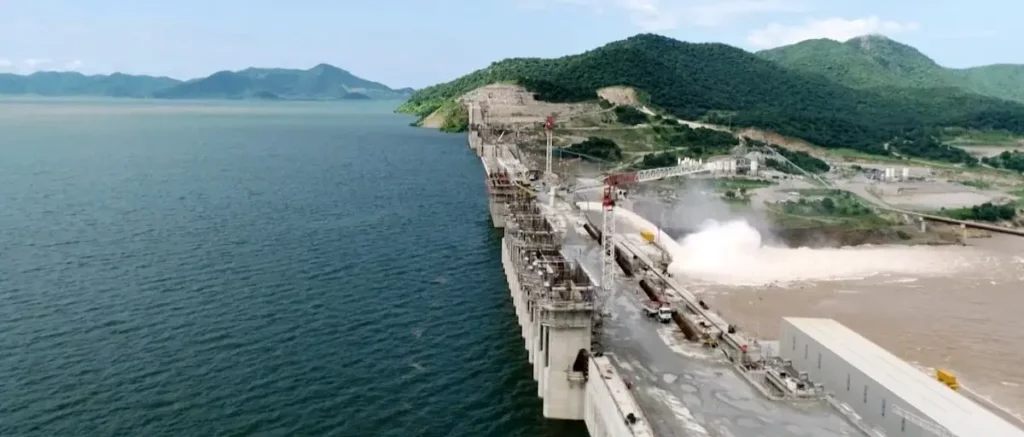
THE Ethiopian government has announced that Africa’s largest hydroelectric power plant, the Grand Ethiopian Renaissance Dam (GERD), has exceeded its expected electricity output. Over the past 10 months, the dam has generated more than 2,700 gigawatt hours (GWh) of electricity, surpassing its initial target of 2,152.8 GWh by 26 percent.
The Ethiopian Electric Power (EEP) revealed that the GERD has outperformed its planned power generation targets for the current 2023/2024 Ethiopian fiscal year, which started on July 8, 2023. This significant increase in power output is attributed to the dam’s enhanced water storage capacity, allowing the two operational turbines to run at full capacity.
The impressive performance of the Grand Renaissance Dam underscores its crucial role in Ethiopia’s energy sector. The dam contributed approximately 16 percent of the country’s total 16,900 GWh of electricity generated during the reported period from various power generating plants across Ethiopia. The dam’s contribution is expected to grow even further as it becomes fully operational.
In April, the Office of National Coordination for the Construction of GERD announced that the project had reached over 95 percent completion. Currently, the dam is at 96.4 percent completion, with the final phases of construction underway. Once the remaining 11 units are operational, Ethiopia’s current generation capacity is expected to increase by 83 percent.
Once fully completed, the Grand Ethiopian Renaissance Dam will have a generating capacity of 5,150 megawatts and an annual energy output of 15,760 GWh. The Ethiopian government began constructing the GERD on the Nile River in April 2011, envisioning it as a cornerstone for the nation’s development and economic aspirations. The dam is expected to propel Ethiopia towards achieving lower-middle-income status soon.
Despite its potential benefits for Ethiopia, the GERD has been a contentious issue among the Nile-bound countries of Ethiopia, Egypt, and Sudan. Both Egypt and Sudan have expressed concerns that the dam could affect their share of the Nile’s waters. However, Ethiopia remains steadfast in its commitment to the project, emphasising its importance for national development.
As the GERD nears full completion, it stands as a testament to Ethiopia’s ambitions and its significant strides in boosting its energy infrastructure. The increased power generation capacity is poised to support the country’s economic growth, providing a reliable energy source for millions of Ethiopians and contributing to regional stability.













